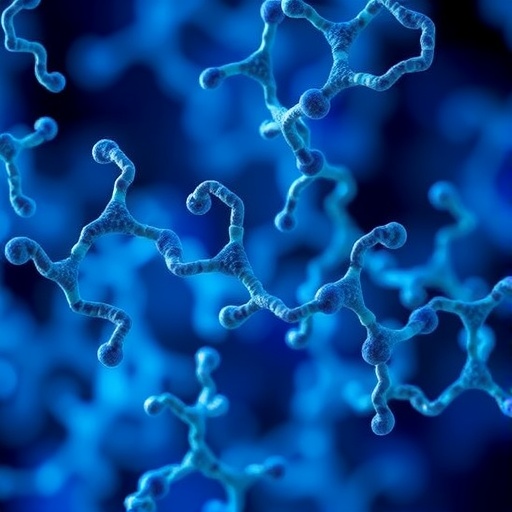In the microscopic world where survival often hinges on an invisible arms race, a novel form of bacterial defense has emerged, challenging previous notions of microbial vulnerability. Recent research has illuminated a remarkable strategy employed by certain bacteria to fend off predatory microorganisms. Central to this discovery is the role of functional amyloid proteins—specifically curli fibres—that act as formidable barriers against bacterial predators and even invading viruses.
Predatory bacteria like Bdellovibrio bacteriovorus are known for their aggressive life cycle, which resembles that of bacteriophages in many respects. B. bacteriovorus invades the periplasmic space of Gram-negative bacteria, siphons off nutrients, and ultimately lyses the host cell to continue its hunt. This predation represents a significant ecological pressure on bacterial communities. Although much research has focused on bacterial defense mechanisms against bacteriophages, defenses against predatory bacteria such as B. bacteriovorus have remained relatively unexplored—until now.
A comprehensive screening of diverse Escherichia coli strains unveiled that approximately one-third possess a robust defense against predation by B. bacteriovorus. This protection arises from the production of curli fibres, which are highly durable oligomers of the functional amyloid protein CsgA. Unlike the typical role of curli in biofilm formation, researchers discovered that their protective effect against predation operates independently of other biofilm-related genes.
Curli fibres form an extracellular matrix that envelops susceptible bacterial cells, establishing a physical barrier that blocks predator invasion. This amyloid-based shield is distinct in its resilience, owing to the unique properties of CsgA protein oligomers that aggregate into β-sheet rich amyloid fibrils. The functional amyloid nature of curli confers exceptional mechanical strength and chemical stability, enabling it to withstand enzymatic degradation and physical disruption.
Intriguingly, the curli-mediated defense mechanism extends beyond protection from B. bacteriovorus. The same amyloid barrier was also effective in mitigating attacks from Myxococcus xanthus, another predatory bacterium known for its complex social predatory behavior. Additionally, curli fibres demonstrated protective capabilities against certain bacteriophages, suggesting their role as a broad-spectrum defense strategy spanning multiple microbial threats.
Expanding the scope of bioinformatic analyses, researchers surveyed the diversity and distribution of bacterial amyloids across diderm bacteria, organisms characterized by having both inner and outer membranes. This survey emphasized that functional amyloids are widespread and highly diverse, hinting at a convergent evolution of amyloid-based defense strategies within the bacterial realm.
When focusing on Pseudomonas aeruginosa, a clinically relevant pathogen with a distinct evolutionary lineage of amyloid proteins, a functionally analogous amyloid system was identified. This system similarly impaired B. bacteriovorus predation, reinforcing the concept that amyloid fibers serve as a conserved molecular shield against bacterial predators across phylogenetic divides.
This discovery challenges long-standing paradigms that have viewed amyloids primarily in the context of human disease or biofilm architecture, repositioning these proteins as key defensive molecules in microbial survival. The functional amyloid paradigm opens new frontiers in understanding microbial ecology and interbacterial interactions, with implications for both environmental microbiology and clinical settings.
From an applied perspective, harnessing or mimicking these amyloid-based defenses could inform the development of innovative antibacterial treatments. Predatory bacteria are being investigated as living antibiotics against drug-resistant pathogens, but natural bacterial defense systems like curli fibers may limit the efficacy of such strategies. Understanding and potentially circumventing amyloid-mediated resistance could enhance the application of bacterial predators in medicine.
Moreover, the molecular architecture of curli offers a template for engineering robust biomaterials that resist microbial degradation. The durability and multifunctionality of amyloid fibrils could inspire biomimetic coatings or surfaces designed to prevent microbial colonization or invasion, benefiting medical devices and industrial systems alike.
Microscopic imaging and genetic manipulations provided a detailed view of how curli fibers extend beyond the immediate bacterial surface to cloak cells in a dense fibrillar mesh. This structure physically impedes predatory bacteria from accessing and invading the vulnerable periplasm, essentially forming an invisible shield that is tough to breach. Such biophysical insights underscore the sophistication of bacterial defense, often underestimated in microorganisms.
Further exploration of the genetic circuits governing amyloid production revealed regulatory networks finely tuned to environmental cues and stress responses. This suggests that bacteria may dynamically adjust their defensive armor in response to the perceived presence of predatory threats, akin to an innate immune-like behavior in single-celled organisms.
The breadth of functional amyloid distribution among diderm bacteria implies a widespread strategy that could influence population dynamics, community composition, and microbial evolution. Predatory interactions drive natural selection, but amyloid-based defenses may modulate these predator-prey dynamics, promoting microbial diversity and ecosystem stability.
This pioneering work redefines our perception of the microbial battleground, illustrating that bacteria are not merely passive prey but are engaged in an ongoing molecular struggle, deploying sophisticated protein structures as shields. The revelation of functional amyloids as multifaceted defenders enriches our understanding of microbial survival and offers promising avenues for biotechnological innovation and novel antimicrobial therapies.
Subject of Research:
Functional amyloid proteins in bacteria and their role in defense against predatory bacteria and bacteriophages.
Article Title:
Functional amyloid proteins confer defence against predatory bacteria.
Article References:
Ledvina, H.E., Sayegh, R., Carale, R.O. et al. Functional amyloid proteins confer defence against predatory bacteria. Nature (2025). https://doi.org/10.1038/s41586-025-09204-7
Image Credits:
AI Generated




